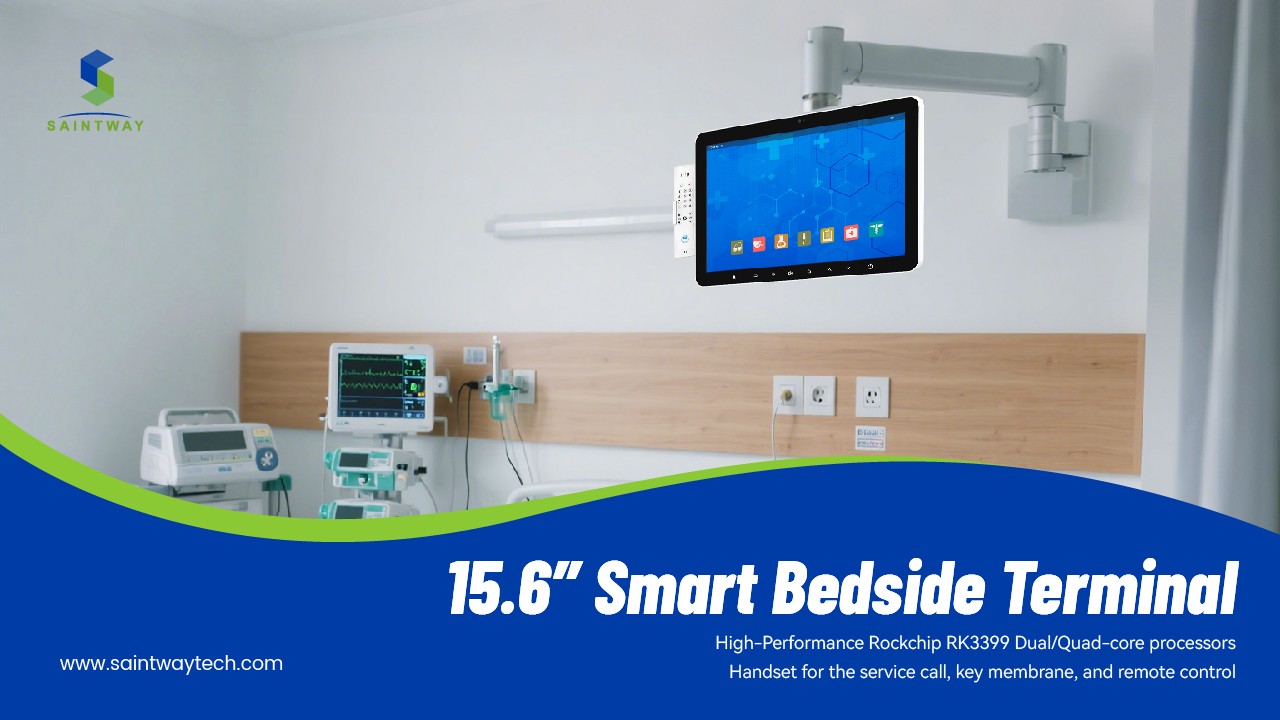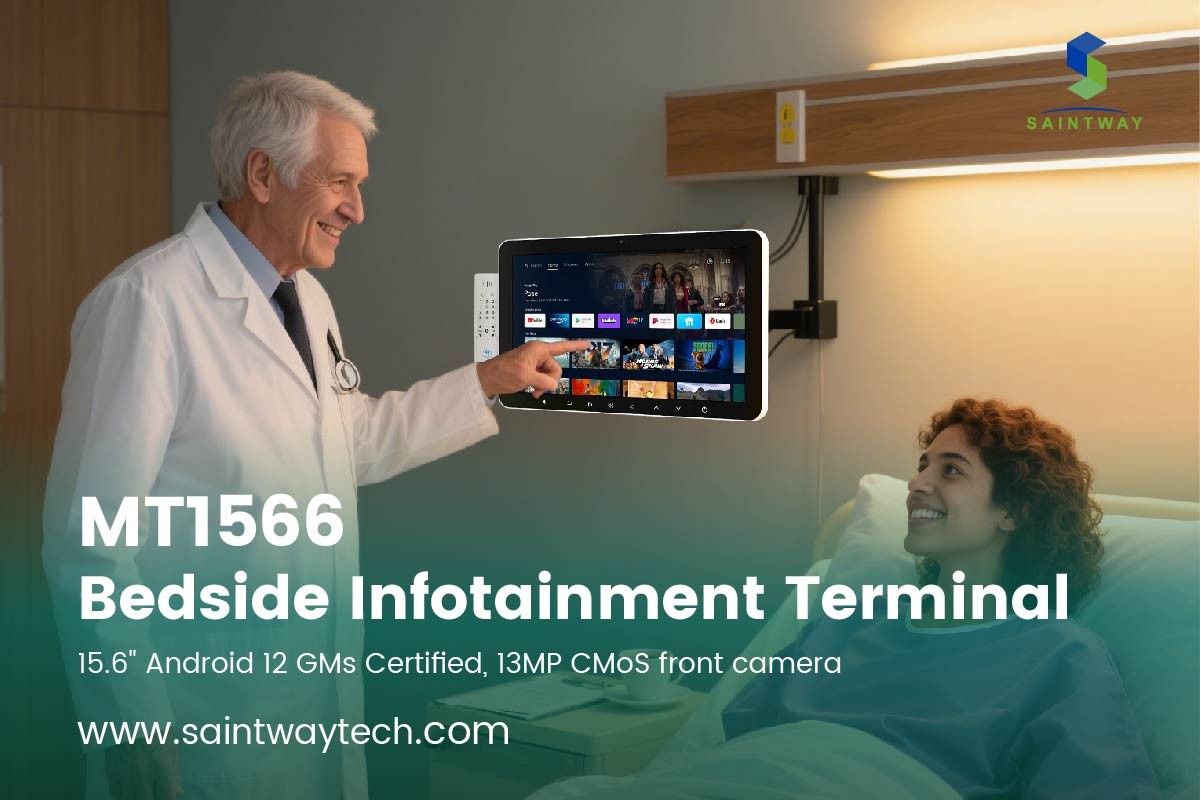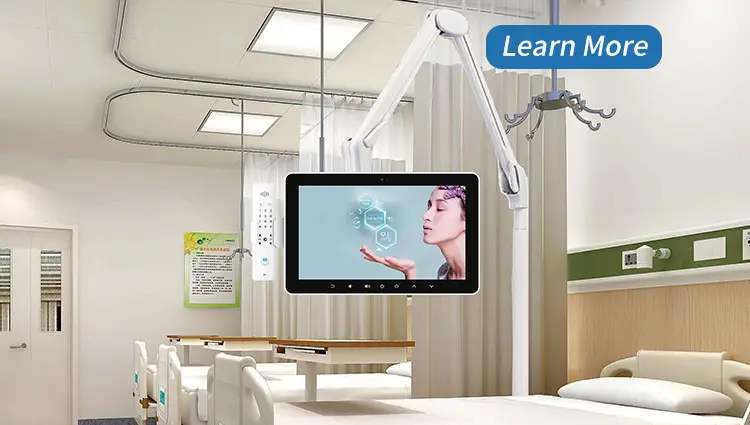- Introduction
- What Is a Smart Bedside Terminal?
- Core Features of a Smart Bedside Terminal
- The Role of Smart Bedside Terminals in Patient-Centered Care
- Benefits for Healthcare Providers
- Benefits for Patients
- Integration with Hospital Information Systems (HIS)
- Smart Bedside Terminals in Telemedicine
- Design Considerations for Smart Bedside Terminals
- Smart Bedside Terminals and Hospital Efficiency
- Key Technologies Powering Smart Bedside Terminals
- Challenges and Solutions in Implementing Smart Bedside Terminals
- Future Trends in Smart Bedside Technology
- Conclusion
- FAQs
Introduction
The healthcare industry is rapidly evolving with digital transformation, and one innovation leading the charge is the smart bedside terminal. These advanced systems go beyond the traditional hospital TV or nurse call button—they empower patients, streamline clinical workflows, and redefine the hospital experience.
Imagine a hospital room where the patient can control lighting, communicate with nurses, check their medical records, or even video call family—all from one touch display. That’s the power of a smart bedside terminal.
What Is a Smart Bedside Terminal?
A smart bedside terminal is an all-in-one digital device mounted near the patient’s bed. It combines functions like patient monitoring, entertainment, communication, and medical record access into a single platform.
Unlike traditional systems, which often require multiple devices or manual intervention, smart bedside terminals act as a central hub for patient care—enhancing both clinical efficiency and patient satisfaction.
Core Features of a Smart Bedside Terminal
High-Definition Touch Display
The terminal features a medical-grade touchscreen with anti-glare and anti-bacterial coating. Patients can easily navigate menus, adjust room settings, or interact with multimedia content.
Secure and Fast Connectivity
Seamless Wi-Fi and Ethernet connections ensure stable access to hospital systems, video calls, and telemedicine applications. Security protocols like data encryption safeguard sensitive medical information.
Patient Identification and Access Control
Using RFID, NFC, or barcode scanners, the terminal identifies patients and staff accurately—reducing medication errors and ensuring secure logins.
Multimedia Entertainment and Communication
Patients can stream movies, browse the internet, play music, or make VoIP/video calls to loved ones, turning hospitalization into a more comfortable experience.
Nurse Call and Clinical System Integration
One-touch nurse calls, integrated EMR systems, and automated alerts help healthcare workers respond faster and more effectively.

The Role of Smart Bedside Terminals in Patient-Centered Care
Modern healthcare emphasizes patient engagement and empowerment. Smart bedside terminals enable patients to take an active role in their recovery by accessing health education materials, tracking treatment schedules, and providing feedback instantly.
This not only boosts satisfaction but also reduces readmission rates by improving understanding of post-care instructions.
Benefits for Healthcare Providers
Streamlined Workflow for Nurses and Doctors
Smart bedside terminals reduce manual paperwork and redundant communication. Staff can update charts, review vitals, and document care directly from the bedside.
Real-Time Access to Patient Records
Instant data synchronization with hospital systems ensures accurate and timely updates—critical in fast-paced medical environments.
Enhanced Communication Between Staff and Patients
Built-in communication modules minimize delays, ensuring doctors and nurses receive alerts instantly through digital notifications.
Benefits for Patients
Entertainment and Emotional Support
Being hospitalized can be stressful. Access to entertainment, messaging, and video calls helps reduce anxiety and promotes mental well-being.
Personalized Care Experience
Patients can adjust room settings, order meals, and review treatment plans—all tailored to their needs. This autonomy enhances trust and satisfaction.
Accessibility for Elderly and Disabled Patients
Voice control, large fonts, and ergonomic design make terminals inclusive and easy to use for patients of all abilities.
Integration with Hospital Information Systems (HIS)
Smart bedside terminals connect directly to HIS, EMR, and PACS systems—enabling real-time medical record updates and test result viewing.
Strict data protection protocols like HIPAA compliance and role-based access ensure patient confidentiality is always maintained.
Smart Bedside Terminals in Telemedicine
Telemedicine is transforming healthcare accessibility. Bedside terminals enable remote doctor consultations, virtual rounds, and even specialist support—especially beneficial for rural or understaffed hospitals.
They bridge the gap between hospital and home care, helping patients transition smoothly after discharge.
Design Considerations for Smart Bedside Terminals
Rugged and Hygienic Design
These terminals are IP-rated for water and dust resistance and built with antimicrobial materials to meet hospital infection control standards.
User-Friendly Interface
Simple, intuitive UI with multi-language support ensures that both patients and staff can use the device effortlessly.
Safety and Infection Control Compliance
Cables, mounts, and power supplies are medically certified, and surfaces are easy to disinfect between patients.

Smart Bedside Terminals and Hospital Efficiency
By automating routine tasks like patient updates and entertainment delivery, hospitals can save hours of staff time daily.
This leads to fewer human errors, lower operational costs, and a more digitally connected environment.
Key Technologies Powering Smart Bedside Terminals
Powered by Android or Linux, these systems leverage IoT connectivity, AI analytics, and cloud integration to deliver real-time insights and seamless communication.
AI-driven modules can even predict patient needs, optimizing resource allocation and enhancing clinical outcomes.
Challenges and Solutions in Implementing Smart Bedside Terminals
Common challenges include:
- Infrastructure compatibility with legacy systems
- Staff adaptation to new digital workflows
- Cybersecurity threats
Solutions involve phased rollouts, regular staff training, and advanced encryption measures to ensure smooth adoption.
Future Trends in Smart Bedside Technology
The future is exciting—with trends like:
- Voice and gesture control
- AI-based patient monitoring
- Integration with wearable sensors for continuous health data tracking
Smart bedside terminals are set to become the nerve center of digital hospitals.
Conclusion
The smart bedside terminal is more than a gadget—it’s a bridge between technology and compassion. By empowering patients, simplifying healthcare workflows, and improving data accessibility, it redefines how hospitals deliver care.
As healthcare continues to embrace digital transformation, the smart bedside terminal stands as a cornerstone of patient-centered innovation—a symbol of efficiency, empathy, and excellence.
FAQs
1. What is the function of a smart bedside terminal?
It serves as a digital interface that connects patients and medical staff, offering entertainment, communication, and clinical tools all in one.
2. How do these terminals improve patient satisfaction?
They empower patients to control their environment, access information, and stay connected, reducing stress and increasing comfort.
3. Are smart bedside terminals safe for patient data?
Yes. They use advanced encryption, authentication systems, and follow medical data protection standards like HIPAA.
4. Can they be customized for different hospital needs?
Absolutely. Terminals can be tailored with custom apps, languages, and UI designs to fit specific hospital workflows.
5. What’s the future of bedside terminals in healthcare?
Integration with AI, IoT, and wearables will make bedside terminals the central hub of smart, connected hospitals.


